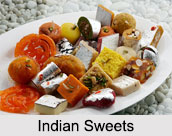 "Turmeric gives the energy of the Divine Mother and grants prosperity of health. Turmeric is effectual for purification the chakras, as well as purifying the path of the subtle body."
"Turmeric gives the energy of the Divine Mother and grants prosperity of health. Turmeric is effectual for purification the chakras, as well as purifying the path of the subtle body."
Ayurveda, the exceedingly revered Indian system of medicine, describes turmeric as an "all-purpose cleanser". However, if one wishes to successfully exploit and comprehend the exact use of typify physical or personality types. Individuals with a Vata dosha are usually very thin and energetic. People with a Pitta dosha tend to be very warm, both in their personalities and in their bodies. People born with Kapha dosha generally are inclined to be large, heavy-set and slow. According to ayurveda, when these doshas move out by force or under free will of balance, illnesses and ailments can come about. The using of the herb turmeric under Ayurvedic terms is most effective at chastening a Kapha imbalance, which can cause the patient to acquire weight and experience fatigue. Turmeric is believed to be a stimulating, warming herb that can help to reduce Kapha and bring Vata and Pitta doshas back up to healthy levels.
Turmeric, as can be grasped, is a much vital herb in Ayurvedic medicine. The spice form of the herb can be distinguished by its dazzling golden colour. While making use of turmeric in ayurveda, it is typically utilised from root of the plant, either fresh or dried. Turmeric possesses umpteen potential health benefits. It acts as a carminative, which implies that the herb can help to prevent and relieve flatulence in the digestive system. Applying a paste of turmeric and chickpea flour directly to the skin can improve the complexion and bring in an overall skin-tone enhancement. It can also be used to battle against dental infections, to help balance blood sugar in diabetics, to relieve pain, to clear the sinuses and augment digestion.
Turmeric, acknowledged as `Haridra` in Sanskrit and `Haldi` in Hindi, has been distinguished as a medicine with multiple properties in Ayurveda since pre-historic times. In contemporary times, uses of turmeric in ayurveda can also be witnessed in "traditional medicine" for treating numerous ailments both mild and chronic. Turmeric is considered to be an indispensable part of the extensive range of herbal medicines described in ayurvedic systems of medicine. Ever since Vedic times, turmeric has been used in ayurveda primarily in two ways - turmeric paste and turmeric juice. While the juice is taken orally, the paste is administered on the skin externally.
To obtain turmeric juice - a translucent, reddish-yellow flavourless liquid - one has to thoroughly crush raw turmeric. Depending upon the ailment and the prescription, this juice needs to be taken either raw or can be mixed with honey to lend the concoction some flavour. Use of turmeric juice in ayurveda is looked at as a magnificent blood purifier. It is also conceived to be quite beneficial in chronic maladies and stomach ailments. In addition to this, turmeric is also prescribed in ayurveda for treatment of skin ailments.
Turmeric, in the form of a paste is time and again prescribed by practitioners of ayurveda for beauty regimen, as well as to treat several kinds of skin problems. However, the administering of turmeric paste has to be performed for a considerable period of time. In ayurveda, usage of turmeric paste is often utilised in treatment of diseases like eczema. The herb is also used for application over cuts and burns. This happens like it does because turmeric is thought to promote healing and possess an antiseptic effect. Besides acting as a flavourant in alternative food too, purifying the blood and improving skin conditions is probably the most universal use of turmeric in ayurveda. Turmeric is so intense a purifier that it, like tulsi, can apparently purify at the chakra level (nadi-shodhana), purifying the channels of the subtle body. Long term use of turmeric, tulsi and triphala can also be equated to a short term `Panch Karma treatment`.
Besides such stellar stylistic and curative presence of turmeric in the world of ayurveda, the herb also possesses further essential properties, like described under:
•The principal organs that turmeric treats under ayurveda are the skin, heart, liver and lungs.
•Turmeric is used for epilepsy and bleeding disorders, skin diseases, to purify the body-mind and to help the lungs expel Kapha.
•Ayurvedic activities of turmeric include: alterative, analgesic, antibacterial, anti-inflammatory, anti-tumour, anti-allergic, antioxidant, antiseptic, antispasmodic, appetizer, astringent, cardiovascular, carminative, cholagogue, digestive, diuretic, stimulant and vulnerary.
•Therapeutic uses of turmeric can be witnessed in: Anaemia, cancer, diabetes, digestion, food poisoning, gallstones, indigestion, IBS, parasites, poor circulation, staph infections, and wounds.
•Turmeric helps to regulate the female reproductive system and distils the uterus and breast milk and in men purifies and builds semen, which is counterintuitive for an acrid `bitter`.
•Ayurvedic application of turmeric reduces fevers, diarrhoea, urinary disorders, insanity, poisoning, cough and lactation problems in general.
•Turmeric is used to treat external ulcers that responds to nothing else. Turmeric decreases Kapha dosha and so is used to cleanse mucus in the throat, watery discharges like leucorrhea and any pus in the eyes, ears, or in wounds, etc.
•In ayurvedic cooking, turmeric literally can be found everywhere, helping in a multifaceted wondrous manner for delectable recipes.
Acting as an antioxidant, use of turmeric in ayurveda also recognises the herb as a heating spice, lending bitter, pungent and astringent tastes.
Uses of Turmeric in Alternative Ayurvedic Medicine
•Alternative ayurvedic medicine uses turmeric for abdominal pain, bruises, chest pains, colic, coma, dysmenorrhea, epistaxis, fever, flatulence, hematuria, hematemesis, hepatitis, sores and tooth ache, and poultice in onto itch, ringworm and sores.
•Professional practitioners also employ turmeric for arsenic poisoning, hemoptysis, mania, post partum haemorrhage and primary syphilis.
•Ayurvedic professionals use turmeric as alterative, anti-periodic, depurative, stomachic, tonic, possibly reflecting the fact that the essential oil is an antiseptic, antacid, apertif, stomachic and tonic in small doses and acting as antispasmodic in large doses.
•Practitioners also prescribe turmeric for boils, biliousness, bruises, dyspepsia, dysuria, elephantiasis, inflammations, leucoderma, scabies, smallpox, snakebite, and swellings.
•A decoction of the turmeric rhizomes is applied to relieve catarrh and purulent ophthalmia.
•A rural Indian ayurvedic remedial measure is to apply turmeric roots to leech bites.
•Fumes of burning turmeric directed into the nostrils induces a copious mucous discharge and relieves the congestion.
•Turmeric is administered in cases of diarrhoea.
•The herb/spice is employed in irregular fevers and dropsy.
•The roots of the herb, sun-baked and powdered is administered in bronchitis; the fumes can also be utilised during hysteric fits.
•A paste made of fresh turmeric rhizome is applied on the head in instances of vertigo.
•Turmeric and alum in the ayurvedic sphere are blown into the ear in chronic instances of otorrhea.
•The flowers of the herb in a pasted form are used in ringworm, other parasitic skin diseases and Gonorrhoea.




















